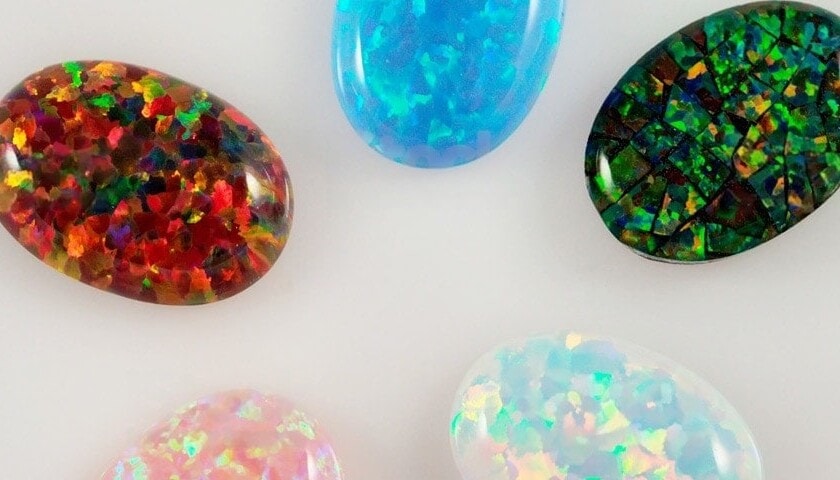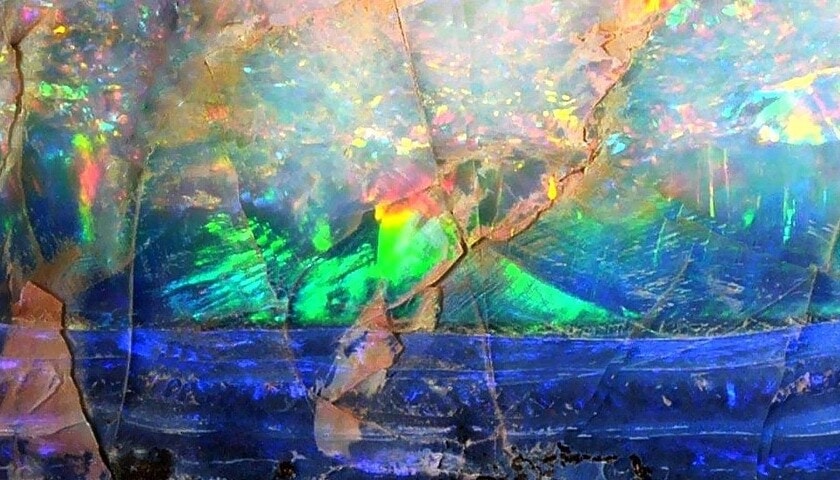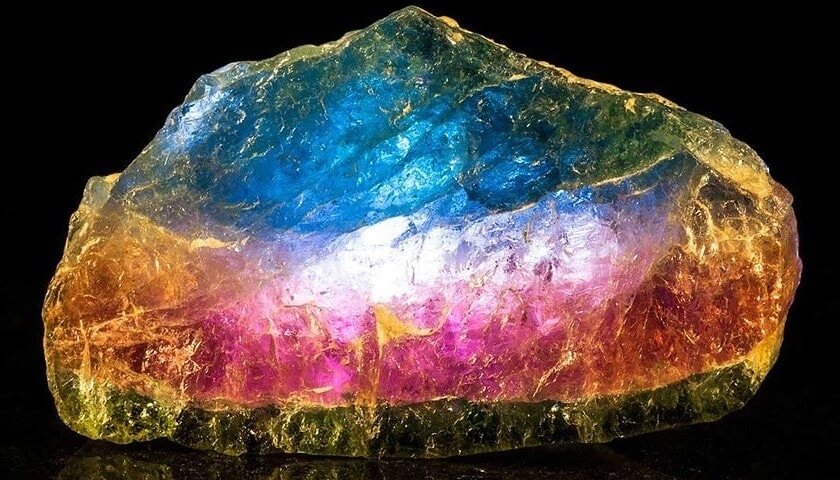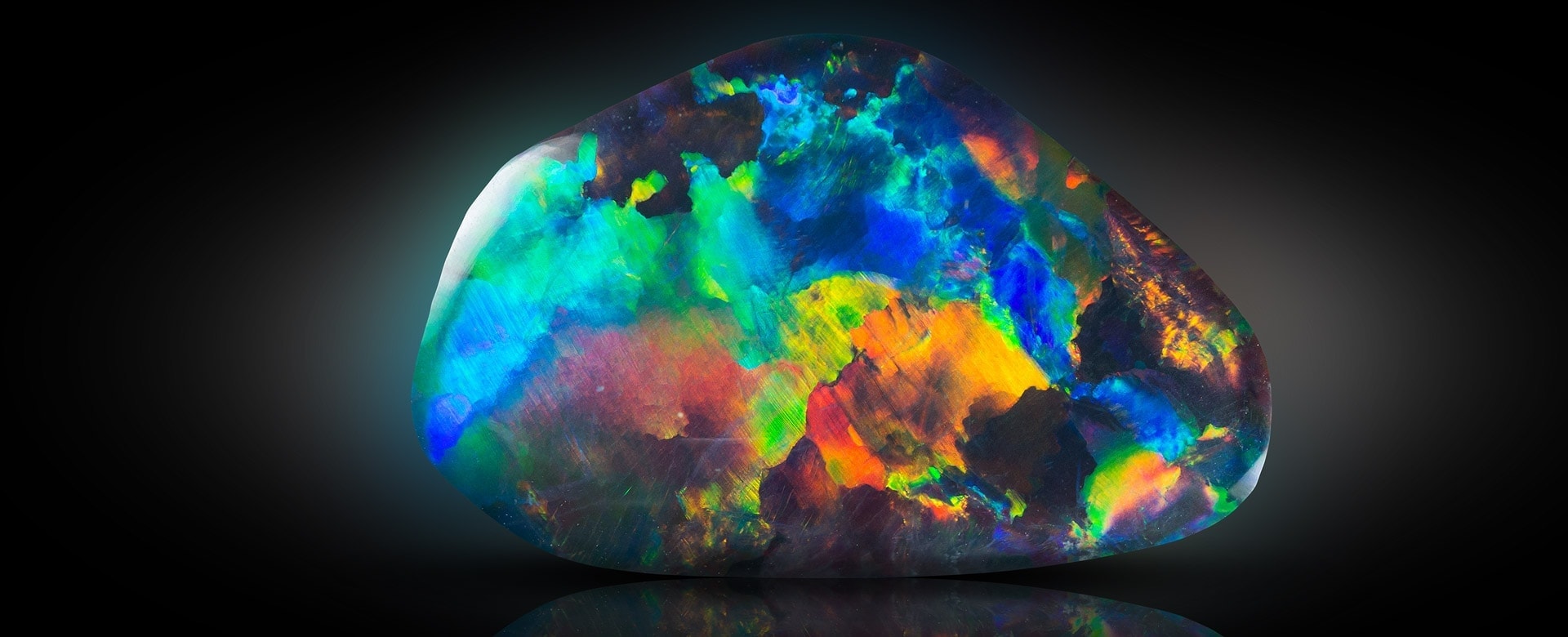Article Highlights
October has two main birthstones, namely opal, and tourmaline. However, there are a few other selections that can step in as October birthstones. Birthstones are a fun way to celebrate your birth month. The October birthstones are particularly attractive and can be used to make a fashion statement. Read further to discover these birthstones and their immense effects on you.
Opal

Opal is a modern and traditional October birthstone. It was the October gemstone in the ancient Ayurvedic calendar. Previously, it was also the zodiac stone for Libra, which falls partly in October.
Opal Meaning and History
For centuries, opal was associated with royalty and good luck. Its name is believed to have originated from India, from where the first opals originated from.
Opal was referred to as upala, meaning a “precious stone” in Sanskrit. Ancient Romans adopted the name to opalus.
Opal has a strange phenomenon known as “play of color”, which is the shifting of colors in different rainbow colors. Ancient Greeks believed opal the gift of protection from diseases and prophecy. Bedouins thought the opal held lightning and fell from the sky during thunderstorms.
Europeans have, since the beginning of time, linked opals to purity, truth, and hope. Centuries ago, people believed opal help the powers and virtues of all colored stones, perhaps due to its play-of-color concept.
Its dramatic color phenomenon has inspired artists, especially writers, to compare it to fireworks, galaxies, and volcanoes.
Over time, opal has received admirable names, such as Pandora, Empress, and Light of the World. Opal has been considered one of the luckiest and most magical gemstones throughout history since it shows almost all colors.
Play of Color and Opalescence
Opal is a common material found almost worldwide. However, many opals are considered common pal, or opal without the colorful flashes known as “play of color”.

What is Common Opal?
Also known as “potch”, common opal is an opal variety that lacks the flashy appearance found in precious opal. Common opal occurs in various beautiful colors that include a selection of wonderful pastels.
Most common opals have an eye-catching appearance and are most definitely overlooked.
What is Precious Opal?
It is the rare opal specimen that exhibits a beautiful color play. The material is usually used to design high-value gemstones if the play-of-color is top-quality and large enough to cut.
Upon examining an opal specimen under bright light, you will notice the play-of-color in different situations:
• When you change the observation angle
• When you move the light source
• When you move the stone
How does opal get its play of color?
The opal surfaces that produce these color effects have many microscopic silica spheres arranged in an organized fashion. The spheres measure almost micron, and they act in a diffraction grating.
Passing light is then diffracted into the spectrum colors. The sphere sizes and their geometric arrangement determine the quality and color of diffracted color.
What is Opalescence?
It is the pearly luster of common opal. However, most common opals lack the pearly luster even when polished.
Opal Colors and Varieties
Opal has all the rainbow colors but rarely in an organized pattern like a rainbow. They appear more like abstract paintings except with very bright colors.

Precious opals are common for providing these beautiful colors, unlike common opals. They are divided into:
- White opals
- Black opals (they show colors against a dark background)
- Fire opals (are generally bright yellow, red, or orange color).
To notice the color of opals, you have to be aware that there are two parts to the color of the opal;
- The background color which is formed by impurities within the stone’s silica structure
- The play-of-colors produced by the stone’s silica structure
Some opal colors tend to determine the value of such stones. For example, red is considered one of the rarest and most sought-after opal colors, making it highly valuable. The orange is also a valuable variety next to red, while the green and blue are more common, hence not as valuable.
Another color factor that determines opal value is the density of color and patterns.
Precious Opal
It flashes in different colors when you view it from different angles when you move the stone or the light source. It can flash several colors such as bright yellow, red, blue, green, orange, or purple. Its value is determined by its color intensity, uniformity, diversity, pattern, and the ability to notice the colors from different angles. Precious opal is rare and primarily mined in Australia.
Common Opal
It does not exhibit any play of colors. It is known as “common” due to its availability in many parts of the world. As such, common opal is less valuable than precious opal. It is frequently cut as a gemstone and can fetch excellent prices.
Fire Opal
It is a term used for colorful opal with a bright fire-like background red, orange, or yellow color. Fire opal may or may not exhibit the play-of-color.
Black or Dark Opal
It is a term used for opal with dark body color, often dark gray or black. It also means opal with a dark green or dark blue body color.
White or Light Opal
These two terms refer to opal with a yellow, white, or cream body color. They are the most common precious opal varieties.
Boulder Opal
It is a term that refers to a cut or rough opal that depicts precious opal linked to its host rock. A few boulder opals tend to appear in thin layers and seams that can be cut into a stone that shows only precious opal in the face-up position.
Matrix Opal
It is a term used to refer to rough or finished gemstones where the precious opal appears in an intimate mixture with the parent rock. Matrix opal is majorly found in sedimentary rocks such as ironstone, chert, sandstone, and limestone.
Opal Healing Properties
It has long been associated with eye health. A soothing opal elixir eyewash is highly beneficial for sore eyes.

It regulates insulin within your body. Moreover, it detoxifies and regenerates your liver.
Opal helps with childbirth and PMS. It stimulates the bladder, kidney, and lymph nodes.
The gemstone releases muscle tension and eliminates pain in your abdomen and lower back.
It can spark your memory and stimulate your nerve endings, which help to treat disorders such as Parkinson’s.
An opal gemstone is ideal for individuals with regular panic or anxiety attacks.
Opal and Chakra
Chakras are the energy centers found in your body and are also referred to as Qi. The human body has seven different Chakras that influence your mental, emotional, physical, and spiritual state. The Chakras are all represented by different colors.
These Chakras include:
- Crown – purple
- Third Eye – indigo
- Solar Plexus – yellow
- Heart – green
- Sacred– orange
- Root– red.
Opal occurs in nearly all colors. The dominant color energies may be used to stimulate corresponding Chakras.
The different opal colors caused by the play-of-color phenomenon can activate all your seven Chakras and link them to the Crown Chakra.
Opal Prices
Different factors will influence opal colors. Color is an essential factor. The black, boulder, and fire opals are precious. As previously mentioned, the red opal is also a precious variety. Play of color is very vital in pricing the opal. The surface that displays the colors should evenly spread across the gem to attain a higher value. Color dominance, intensity, and range also influence the prices.
The pattern is also vital in pricing opal. No two opals will have an identical pattern. However, they do possess some established and identifiable patterns. The Harlequin pattern is the most expensive.
The shape is also important in pricing. The most valuable and sought-after shape is a large black opal cut to an oval shape with plenty of play-of-color, especially with a high dome and a dominant red coloring.
The clearer the opal, the more valuable it is. Avoid opal gems with cracks inside, especially those that appear close to the surface.
Opal Care and Cleaning
Opal weighs 5.5-6 on the Moh scale, making it a relatively soft gem that requires heavy care. To understand how to care for opals, you have to know the three opal types available:
- Doublets. Doublet opal has two layers; a black backing and a thin slice of opal. The slice is cemented to the backing to enhance the stone’s color.
- Triplets. Triplet opals have another layer on the top to secure the opal.
- Natural solid opal, which has just been cut and polished.
Remove your opal jewelry if there is a slight possibility of damage.
Solid opals are safe in the water, unlike doublets and triplets. Opal contains just about 5-6% water. Therefore, it may crack if you subject the stone to rapid temperature changes or extremely dry conditions.
Avoid low humidity extremes or high temperatures. Since doublets and triplets have multiple layers, prolonged exposure to water gradually causes lifting between the layers and water infiltration.
Cleaning
Clean your solid opal gently with a mild detergent in water and a soft cloth. Avoid cleaners, chemicals, or bleach.
Clean your doublets and triplets by wiping them with a soft, damp cloth and mild detergent. However, avoid immersing or soaking them in water.
For storage purposes, place your opal in a padded cloth bag for protection and keep it away safely.
Tourmaline
Tourmaline is the modern October birthstone in the US. It is also a traditional October birthstone dating as far back as the 15th Century.

Tourmaline Meaning, History, and Symbolism
In the 1500s, somewhere in Brazil, a Spanish conquistador confused the tourmaline with emerald. This confusion lasted for a while until scientists recognized tourmaline as a distinct mineral species in the 1800s.
Tourmaline comes from the Sinhalese word tura mali, meaning “stone with mixed colors.” Tourmaline often has mixed colors in one crystal.
Ancient mystics believed that tourmaline could inspire artistic expression due to its color variation.
Tourmaline symbolizes power and protection. Ancient Egyptians believed that the gemstone passed via a rainbow as it appeared through the earth to the surface.
Tourmaline Colors and Varieties
The stone is divided into several species, such as Uvite, Liddicoatite, Elbaite, Schorl, and Dravite, being the most vital. They are further divided into varieties depending on their colors.
Schorl
The name is closely related to the Old German word schurl, a word with an unknown derivation that possibly means “impurities”. It is the most common of the tourmaline varieties and can be found in different locations. However, the most common location includes Germany, Namibia, Brazil, the USA, Mexico, among others.
It is commonly constituted in granite and granite pegmatites. It is occasionally found as a detrital rock. Schorl appears in black, bluish-black, greenish-black, and brownish-black.
Elbaite
It is a mineral species belonging to the tourmaline group. It forms three series with Schorl, dravite, and fluor-liddicoatite.
It is a desirable member of the tourmaline group due to its color depth and variety as well as crystal quality.
It forms ingenious and metamorphic rocks and veins. It is also allochromatic, meaning it has trace impurity amounts that can tint crystals. Elbaite appears colorless, in red or pinkish-red, light blue to bluish-green, and green.
Dravite
Also known as “brown tourmaline”, it is a sodium magnesium member of the tourmaline group. It often forms in crude, uninteresting formation. Dravite may be partially replaced or intergrown with Schorl. It can be hard to distinguish Dravite from Uvite. Dravire appears in brownish-black, dark yellow, and orange-brown. It also rarely appears in orange, yellow, and green.
Liddicoatite
It is an uncommon tourmaline variety. It is almost identical in chemical composition with Elbaite. However, it has a calcium atom replacing the sodium atom.
It is a very colorful mineral. Its colors include blue, purple, pink, red, and green. It is also found in white, orange, yellow, brown, black, and colorless.
Uvite
It is a tourmaline mineral that forms various crystal formations than most of its tourmaline counterparts. It lacks color diversity but appears in a beautiful green and reddish-brown color. It can also occur in lustrous submetallic crystals.
Rubellite
It is one of the rarest, most precious, and beautiful tourmaline gemstones. This gorgeous pink to red gemstone may appear like an alternative to ruby.
Indocolite Tourmaline
Also known as “blue tourmaline,” it is a rare tourmaline mineral. It gets its color from tiny iron impurities.
It is mined in several countries such as Namibia, Tanzania, Sri Lanka, Kenya, Malawi, among others.
Chrome tourmaline
It is found only in East Africa, mainly in small sizes. Chrome tourmaline displays perhaps the richest, most intense green color in the gemstone industry. It is generally quite rare, especially in sizes larger than one carat.
Bi-color Tourmaline
Some tourmaline varieties occur in dual or more distinctive colors and are mostly known as bi-color tourmalines. They occur in several color combinations and depict various color zones via the crystal. They are highly prized when the colors are vivid and color zoning is properly defined.
Watermelon Tourmaline
Watermelon tourmaline is considered one of the most famous multicolor tourmalines. They combine pink or red with green and sometimes with a thin white area separating the colors.

Paraiba Tourmaline
This is one of the few gemstones that has caused massive excitement in the gemstone world. The Paraiba tourmaline caused a tremendous buzz when it was discovered in the 1990s. It has an unusually vivid blue to green color not common in the gemstone industry.
Tourmaline Healing Properties
Tourmaline is thought to be one of the most resourceful gems when it came to gemstone healing properties.
- Tourmaline strengthens your nervous system, blood, and lymph.
- It works excellent with your weight loss efforts and helps to reduce cellulite.
- Tourmaline offers excellent relief from headaches and migraines.
- It enhances your stamina and physical vitality. The stone helps with skin disorders.
- The stone has also been used as a regenerative and influencing solution for years.
Tourmaline and Chakra
The seven body Chakras are believed to influence our mental, physical, spiritual, and emotional states.
Tourmaline can be found in different colors, making it ideal for treating all Chakras.
Tourmaline can be used to unblock all Chakras to ensure a unified system.
The purple tourmalines work with the Crown Chakra to reduce headaches and migraines. The blue tourmalines work with the Throat Chakra to improve communication and work on thyroid issues.
The pink or green tourmalines work with the Heart Chakra to provide a warm feeling of love. The black or red tourmalines work with the Root Chakra to ensure a sense of confidence and security.
Tourmaline Price
Generally, the most valuable tourmaline is the bright, pure red, green, and blue tones. However, the electric vivid green to blue shades of cuprite tourmaline is also rare and valuable in their own class. The blue tourmaline costs somewhere between $200-$1000 per carat, depending on the color intensity.
The chrome tourmaline is also a premium-priced tourmaline gemstone.
The Paraiba is the rarest and most expensive tourmaline variety. With a neon-like green or blue colored with traces of copper, Paraiba tourmalines are so scarce that prices can be hard to determine.
Tourmaline Care and Cleaning
Fortunately, tourmaline is a hard stone that is resistant to scratching and breaking. It measures 7-7.5 on the Moh Scale. However, you should protect it from sharp blows or sudden temperature changes. Tourmaline can also be damaged due to prolonged exposure to heat. High heat alters the gemstone colors and may cause fracturing.
Avoid storing tourmaline in direct sunlight to prevent the long-term UV radiation from affecting the stone’s properties and color fading.
Clean your tourmaline jewelry with a mild solution of water and dishwashing detergent. Soak the jewelry for a few seconds and use a soft-bristled brush to buff the jewelry.
Aquamarine
Aquamarine is a traditional October birthstone in the old Polish, Hebrew, Roman, and Arabic calendar.

Aquamarine comes from the Latin words aqua, meaning “water,” and marina, meaning “from the sea.” The finest aquamarine colors remind you of the sea and its tranquility.
Aquamarine is the blue variety of the beryl family. Beryl is a group of minerals that also include heliodor and emeralds.
Part of its charm and allure is its resemblance to the calm blue sea. Quality aquamarine stones are eye-clean, meaning they have no inclusions or blemishes.
Aquamarine is known to enhance courage, increase intelligence, and attract youthful joy.
Beryl
Beryl is the October birthstone in the ancient Russian and Italian calendars.

Beryl is abundant in mineral form. Emerald is the most famous member of the beryl mineral group, followed closely by blue aquamarine.
Beryl comes in varieties, such as golden beryl (which is not very well-known), pink (morganite) beryl, and colorless or white. Red beryl is the rarest beryl variety.
Beryl is believed to elevate sincerity and bring cheerfulness.
Jasper
Jasper is the October birthstone in the old Tibetan calendar.

The word jasper means speckled or spotted stone. Jasper has unique swirling patterns and flecks of colors that make it an exquisite gemstone. Ancient civilization considered jasper to be extremely rare and precious and often confused it with carnelian, jade, and nephrite.
Jasper comes in almost any color. However, these colors tend to be earthy tones. Jaspers come in red, brown, green, and yellow, which are the most common. You can also find them in blue and purple. Jaspers tend to have two or more colors in one gemstone.
It is a type of Chalcedony but has a higher percentage of different materials that give it its color variations.
Jasper is believed to help bring emotional stability.
Coral
Coral is the October birthstone in the Hindu calendar. Precious coral is a variety of natural coral closely linked to reef-building stony coral.

Most coral varieties are varieties of Corallium rubrum. This is a specific pink-red colored coral genus species.
Coral is an organic material and is technically not a hard or durable gemstone since it weighs a 3-4 on the Moh Scale.
Precious coral typically shows a range of warm pink-red colors, such as medium red and light-red to salmon.
Coral is used for many reasons, including infertility among the 20th Century Italians. It is believed to chase off evil and offer a deep sense of protection.
Final Thoughts
Most people don’t advocate for the destruction of coral reefs to make jewelry. However, the precious coral and the other October birthstones are the ideal gifts to yourself or a loved one. They are especially beautiful when worn as jewelry and help you maintain your physical, emotional, and spiritual balance.



